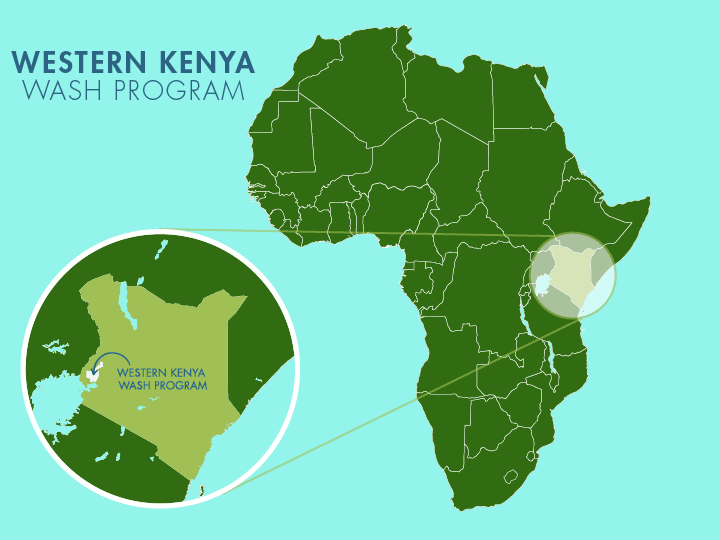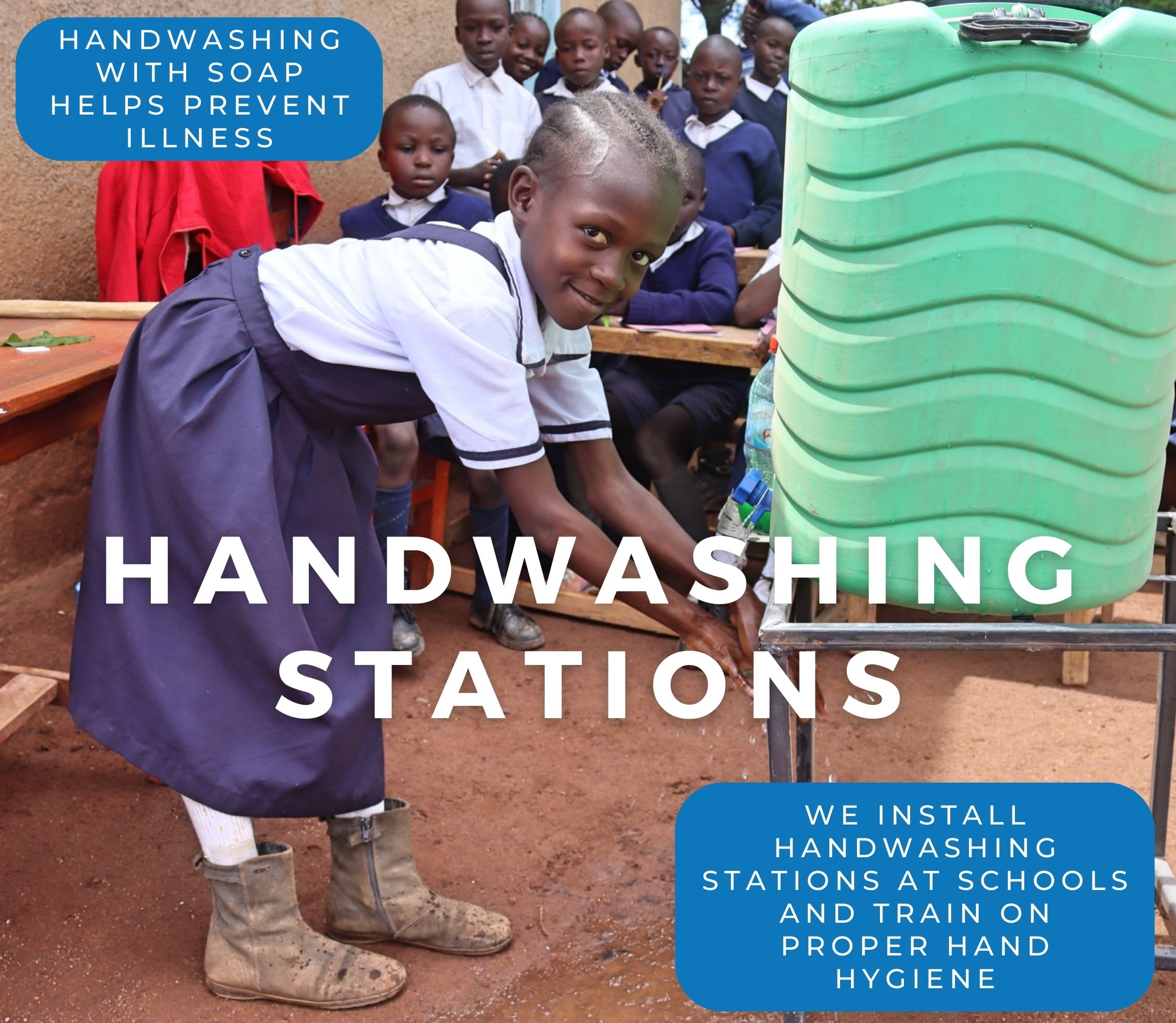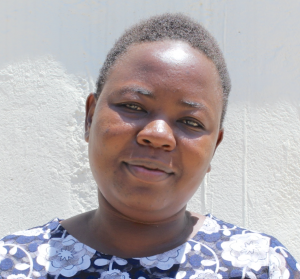At St. Francis Xavier Shikoti Mixed Secondary School, the sound of chatter and shuffling feet fills the air. It’s break time, and 628 students have gathered around the hand-dug well in the schoolyard. Buckets clatter, laughter mixes with frustration, and the line snakes around the muddy clearing. For these students, fetching water isn’t just a chore—it’s part of their daily school life.

Students fill their jerrycans.
The school has grown steadily since it was founded in 1990. What began as a small rural institution with only a few classrooms has become a respected secondary school. Teachers and parents take pride in the students’ achievements, and many graduates have gone on to higher education. But one challenge continues to hold the school back: access to clean, reliable water.
The school relies on two sources for its water—a hand-dug well with a submersible pump and a rainwater tank. The tank is helpful when the rains come, but during dry seasons, it quickly empties, leaving the hand-dug well as the main source. Unfortunately, the well is far from perfect.

Hand-dug well.
"The waterpoint area is not well-maintained; there is no proper covering or fencing around the well, making it easily accessible, and waste materials are seen nearby, exposing it to contamination,” shared Field Officer Betty Muhongo.
When the water is drawn, it sometimes appears brownish, especially after rain. There’s a faint earthy smell, [a] sign that the water may be carrying organic matter from the surface. Students and staff often complain of stomach upsets and other symptoms that point to waterborne illnesses. Yet with no alternative, they continue to drink, wash, and cook with it every day.
At the height of the school day, the well becomes a busy gathering place. Lines of students stretch across the compound, each clutching a container. The ground turns slick from spilled water, and the sound of quarrels occasionally rises as patience wears thin. The lack of drainage makes the area muddy and slippery, resulting in frequent accidents.
Among those waiting in line is sixteen-year-old Mitchelle, a bright student with determined eyes. She explains how fetching water disrupts her school routine.

Mitchelle.
“Fetching water takes a long time because many students are trying to collect it at the same time, especially during break or lunch. Sometimes, if the area is muddy or slippery, we have to be extra careful not to fall. This makes it take even longer to get water and get back to class," reported Mitchelle.
Each day, Mitchelle spends about fifteen minutes collecting water. Sometimes, it takes longer.
“I would use that time to study, finish my homework, or even rest before the next lesson. I could also join other school activities like clubs or sports," she continued.
But long lines often bring tension.
“Sometimes, students push or shout at each other when the line is long. Some try to skip the queue, and it causes arguments or even small fights," she said. “I sometimes get pushed to the back of the queue, especially when older students try to force their way to the front.”
When the well takes too long to refill, frustration sets in.
“Sometimes the well takes a long time to refill, and the water comes out very slowly. It makes me feel tired, frustrated, and worried, especially when I’m late for class or can’t get enough water to wash my plate or drink," Mitchelle said.

She pauses before admitting how much this struggle affects her performance.
“Fetching water affects my time at school and sometimes my exam scores. I often spend a lot of time in long lines, especially during break, which makes me late for lessons, which leads to poor performance," she continued.

Students in class.
Still, she dreams of a better future. “My plan for the future is to finish school, go to college, and become a teacher. I want to help other children learn and have a better life. I also hope to give back to my community and support schools like mine so that students won’t have to struggle with things like water problems the way we do now.”
And when asked how she feels about fetching water, she sighs. “When I’m sent to fetch water, I feel tired and sometimes frustrated, especially when the line is long or the water runs out. It takes a lot of my time, and I worry about missing lessons or getting in trouble for being late.”

Field Officer Betty Muhongo, who conducted the interviews, watched students waiting in the long line. One moment stood out to her: “One moment that impacted me the most was seeing how frustrated and tired the students were while waiting in long lines just to fetch water. Some looked anxious about missing their lessons, while others got into small arguments due to overcrowding. I was especially moved when a student quietly said they wished they could use that time to study instead. It reminded me that access to clean, reliable water is not just about health—it directly affects education and children's future.”
For St. Francis Xavier Shikoti Mixed Secondary School, hope lies in the promise of a new borehole with a hand pump; a clean, dependable water source that could transform daily life. With it, the students would no longer lose learning time in long queues. The muddy, unsafe area around the well would be replaced with a well-constructed drainage system. Hygiene would improve, and the threat of disease would fade.
Mitchelle’s dream of a better education—and a healthier school—could finally come true.
Steps Toward a Solution
Schools without reliable, on-premises water access often rely on students to fetch and carry water, leading to rationing and uncertainty about water quality. The water is typically poured into a communal storage tank and used by the entire school. With children carrying water from all different sources, it is also impossible for teachers and staff to know exactly where the water comes from and how safe it is to drink.
A new water point will be located on-premises at the school to ensure accessibility, reliability, and safety for students, teachers, and staff while meeting our school coverage goals. Having water available at the school allows children to drink, wash hands, and use sanitation facilities without leaving school grounds, preventing disruptions to lessons and reducing safety risks. A dedicated source increases water availability, reduces reliance on stored water, minimizes rationing, and ensures confidence in the safety of the water. This means staff and students are healthier, and their lessons aren’t disrupted, contributing to a better education!
Our technical experts worked with the school leadership and local community to identify the most effective solution to their water crisis. They decided to drill a borehole well, construct a platform for the well, and attach a hand pump.
Well
Abundant water often lies just beneath our feet. Aquifers—natural underground rivers—flow through layers of sediment and rock, offering a constant supply of safe water. A borehole well is drilled deep into the earth to access this naturally filtered and protected water. We penetrate meters, sometimes even hundreds of meters, of soil, silt, rock, and more to reach the water underground. Once found, we construct a platform for the well and attach a hand pump. The community gains a safe, enclosed water source capable of providing approximately five gallons of water per minute.
Our proposed water point can only serve 300 people per day. We hope to continue working with this community to identify other water solutions that will ensure all the people in this community have access to safe and reliable drinking water.
Handwashing Stations
Alongside each water source, we install two gravity-fed handwashing stations, enabling everyone at the school to wash their hands. Handwashing is crucial for preventing water-related illnesses within the school and community. Student “health clubs” maintain the stations, fill them with water, and supply them with soap, which we often teach them how to make.
Latrines
We will construct two Ventilated Improved Pit (VIP) latrine blocks designed to prevent fecal disease transmission. Each latrine features a cement floor, making it easy to use and clean regularly. Three stalls will serve the girls, and three will serve the boys.
School Education & Ownership
Hygiene and sanitation training are integral to our water projects. Training is tailored to each school's specific needs and includes key topics such as proper water handling, improved hygiene practices, disease transmission prevention, and care of the new water point.
To ensure a lasting impact, we support forming a student health club composed of elected student representatives and a teacher. These clubs promote hygiene practices schoolwide and keep handwashing stations well-stocked. This student-led model encourages a sense of ownership and responsibility.
Safe water and improved hygiene habits foster a healthier future for everyone in the school and the surrounding community.

 Borehole Well and Hand Pump
Borehole Well and Hand Pump
 Rehabilitation Project
Rehabilitation Project




















